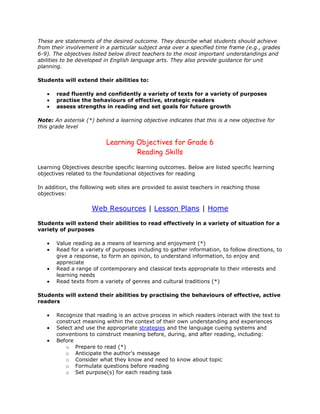These documents provide learning objectives for reading skills for grades 6 through 9. The objectives are designed to guide teachers and direct students to develop important understandings and abilities in English language arts over several grades. The objectives cover extending abilities to read effectively for various purposes, practicing behaviors of active readers such as making predictions and drawing inferences, and assessing reading strengths to set goals for improvement.








